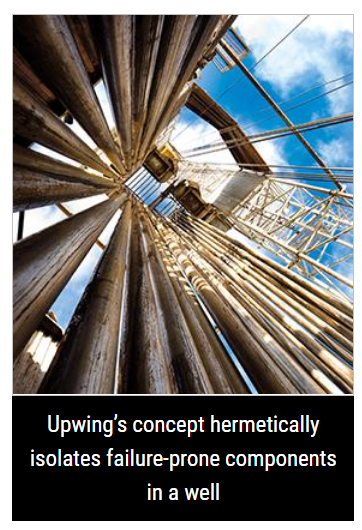Welcome to Sino Bearings web
24x7 HOTLINE:+86-28-81454188

 TECHNOLOGY
TECHNOLOGY
Pat McMullen reveals how passive magnetic bearing systems improve reliability and retrievability of electrical submersible pumps in offshore oil wells
Electrical submersible pumps (ESPs) are widely used as artificial lift tools to remove liquids from oil wells. They are complicated electromechanical systems that must survive harsh downhole conditions that are constantly changing and transient conditions that are difficult to identify. Although there have been improvements to ESP components through the years, their reliability and availability have not yet reached a state that they are cost effective for offshore applications. This is mainly due to the cost of intervention and loss of production in case of any malfunction of the ESP components.
Improvements at the component level have failed to alleviate these failure modes. As a result, operators have accepted the limited reliability and availability of ESPs and have focused instead on implementing new procedures to reduce the time and cost of deployment, rather than undertaking a total redesign of the basic ESP architecture. The average predicted life of ESP systems is about three years. Although alternative intervention techniques can lower the cost of deployment and retrieval of ESPs, the frequency of these interventions and cost of ESPs are still over 30% of the cost of ESP operations for offshore applications. Analysis reveals that eliminating the failure modes related to the electrical system and motor protector, the MTBF of an ESP can be improved to over 10 years.
Disruptive Technology To The Rescue
To address the underlying issues of ESP failure rates, Upwing Energy – working with the support of offshore operators and through the DeepStar Consortium – set out to undertake a “clean sheet” approach and devise a completely new architecture that would simultaneously improve both reliability and retrievability.
To that end, Upwing applied its expertise and experience with permanent magnet technologies to design, develop and test a new robust, scalable magnetic drive system. The Upwing Magnetic Drive System (MDS) hermetically isolates all the failure-prone electrical components from the harsh production fluids by placing them in the annulus of the well as a part of the permanent completion. It also simplifies deployment and intervention using slickline for the system’s mechanical string.
This architecture also eliminates the need for the vulnerable and failure-prone motor protector, which is a very complex, unreliable component in a conventional ESP. The remaining mechanical components, such as the pump, thrust bearing and motor rotor are placed on a retrievable string inside the well tubing. The result is significantly greater reliability and a simplified deployment and recovery system for the mechanical working systems when compared to conventional ESP systems.
Passive Magnetic Bearings
The MDS uses Upwing’s contact-less passive magnet bearing (PMB) technology. The rare earth magnets in the bearing system are positioned to centre the rotor while rotating (regardless of the rotation speed) or in static (non-rotating) condition. While the motor is operating, the bearings do not contribute any losses and are not affected by any fluid that is in the magnetic path of the bearings.
The motor in the retrievable string is driven and supported by the magnetic fields generated in the permanent completion without any mechanical contact between the retrievable string and the permanent completion. Torque and radial centralising force are transmitted through the large gap by way of the magnetic fields.
Since the magnetic fields are produced with permanent magnets, they do not require any control or lubrication for operation. They can operate with large clearances to allow free fluid flow, are easily sealed from the environment and have virtually no bearing rotating losses.
The annulus space in the permanent completion can be filled with corrosion-inhibited completion fluids to further protect all the electrical components. For very hot downhole conditions, higher reliability and power density can be achieved by circulating coolant from the surface to the electrical housing, significantly extending the life of the ESP system.
A full-scale demonstration of a single passive magnetic bearing has confirmed and further characterised the properties of the deep groove ball bearing system through the support of the DeepStar Consortium.
Next Steps
With continued funding from the Deepstar Consortium, Upwing is advancing the MDS concept to the next level in system development, prototyping and testing all system components and subsystems with the goal of full system demonstration in 2023.
Pat McMullen is chief technology officer at Upwing Energy